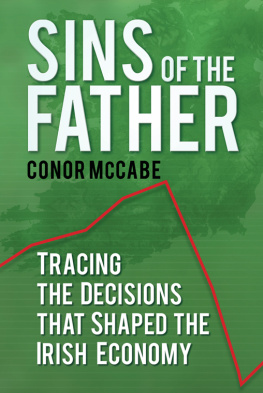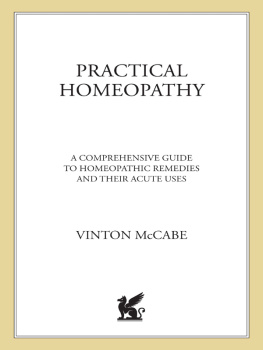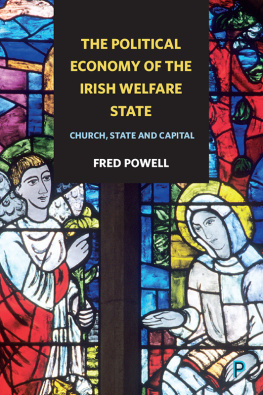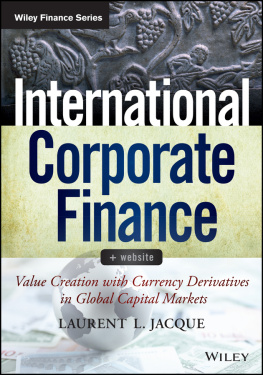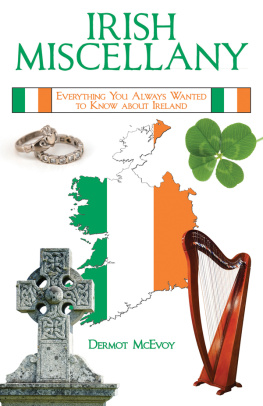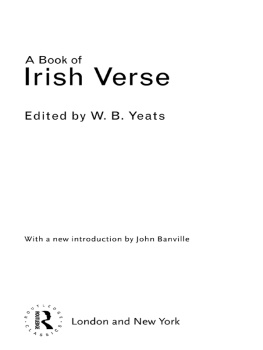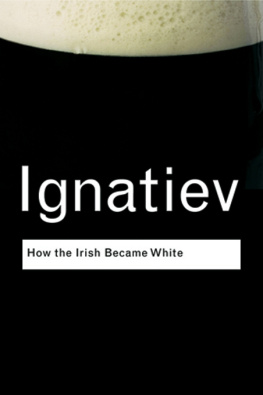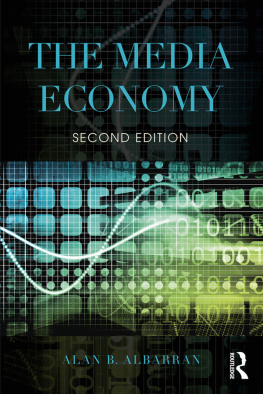CONTENTS
Special thanks to:
Donagh Brennan; my nephews Kevin and Jack Cleary; John Cleary; Ronan Colgan and the staff at The History Press Ireland; Rudi Deda; Ciarn Finnegan; Daith Flynn; Colm Hall; Dr Brian Hanley; Dr Donnacha Sen Lucey; Donal McCarthy; Padraig Walsh McCarthy; Miriam Guilln Pardo; the staff of the National Library of Ireland and in particular Gerard Kavanagh; my brothers Aiden, Niall, Paul and Gerard, and my sisters Kathleen, Nora, Sandra and Siobhan; and Joanne Walsh.
There have been more than a few attempts to explain why the Irish banking crisis developed the way it did, and the argument that it was due to a breakdown in moral standards is quite a popular one. The journalist Fintan OToole was explicit in this regard when he wrote in 2009 that, the absence of a sense of propriety, of restraint and of right and wrong on the part of the bankers was not just obnoxious, it was economically disastrous.
Yet, the banking crisis in Ireland was not caused by pockets of immorality in an otherwise reasonably well-functioning system. The ruthless pursuit of profit is not personal; that is the way business works. And what is condemned as immoral in times of crisis is often praised as savvy and Similarly, there is nothing particularly unique about the ethical cocoons of Irish bankers, their frightening lack of morality, lack of restraint or sense of propriety. This was a worldwide financial crisis, after all, not a regional or a Celtic one. In other words, it was not the implosion of speculative debt but the ability to transfer that debt wholesale onto the shoulders of the State which marked out Irish bankers as a step above their worldwide contemporaries.
The decision by the Irish government on 30 September 2008 to guarantee almost all the liabilities of six Irish financial institutions was not an economic decision but an exercise in power. The deeper truth exposed by the present crisis, wrote the journalist and politician Shane Ross, is that Ireland harbours more powerful forces than Fianna Fil. And while this is true, the purpose of this book is not to show that banks and property developers are indeed powerful in Ireland but to explore why that is the case. What is it about the Irish economy that has made financial and property speculation a core activity and not, say, fisheries or gas? Why were builders and insurance salesmen fted as entrepreneurs, while indigenous exporters outside of agriculture and tourism struggled to find support? How did this situation arise, and how deep are its roots?
Put as concisely as possible, the type of business activities which dominated the Irish economy in the twentieth century cattle exports to Britain and financial investment in London; the development of green-field sites and the construction of factories and office buildings to facilitate foreign industrial and commercial investment; the birth of the suburbs and subsequent housing booms predicated on an expanding urban workforce saw the development of an indigenous moneyed class based around cattle, construction and banking. These sectional interests were able to control successive government policy, much to the detriment of the rest of the economy, which had to rely on whatever scraps it could pick up from quasi-committed multinationals and government-funded grants and tax breaks. In 2008 the construction and banking sectors of that class closed ranks in order to protect themselves from oblivion, resulting in the bank guarantee and the creation of the National Asset Management Agency.
The power to do that did not develop overnight. In order to find the reason why that class was able to wield such influence at such short notice, we are going to have to dig. This book sets out a historical analysis of the events of September 2008 in order to achieve that objective.
History provides a canvas wide and deep enough to enable us to see the economic and political mechanisms, the machine itself, in motion. By looking at the way the Irish economy actually works the deep structures and investment strategies the governments response to the banking crisis, despite its inherent insanity, starts to make sense. The logic behind it reveals itself. It is still deeply shocking, but it was not the result of a few bad apples.
The plan of the book is, hopefully, straightforward enough. There are four chapters dealing with the development of the Irish economy, and one chapter on the crisis itself. It starts with housing, as the subject is saturated with so many myths and half-truths that it demands a factual analysis. There is no Irish property-owning gene. It is not part of our DNA. Home ownership outside of rural areas is a relatively new phenomenon. Chapter Two deals with cattle, as it is simply impossible to discuss the history of the Irish economy without discussing beef and live exports. Up until the 1980s, cattle was to Ireland what the car industry was to Detroit and, although the Irish Free State gained partial independence in 1922, its economy, via the cattle industry, remained intertwined with that of the UK.
The structural problems related to that situation an independent country with a regional economy had an influence on the so-called Whitaker/Lemass revolution in the 1950s and the superficial industrialization of the Irish economy in the decade which followed in its wake. Ireland imported foreign industry as a substitute for indigenous industrial growth. This is also the period when we see a new type of Irish businessman the speculative builder and financier come to the fore. The banking system is opened up and liberalized. By the late 1980s foreign industrial investment has stalled. The government decides to extend its low corporation tax rate to financial as well as industrial exports. The International Financial Services Centre is born. Ireland becomes a tax haven, with minimum regulation and oversight. By the time the last of the barriers to speculative financial trading are lifted in the US, Ireland is more than ready to take the worlds money. In 2008 the veneer of cheap credit suddenly fades, leaving the shaky edifice of the Irish economy exposed.
It is hoped that these five chapters will shine a light on the reasons why Ireland has the businesses it has, and why banks and speculators wield so much power and influence. It is only by acknowledging the facts of our situation that we can even begin to attempt to do something about it. This book is presented as a small contribution to that process.
1
A lot of what we consider to be normal and natural about Irish housing dates from the 1920s. The first garden suburbs were built during this time, with significant subsidies to private builders backed up by a government policy that promoted home ownership above tackling the tenements and slums. It was a policy which favoured the middle classes and the higher-paid, skilled members of the working class. However, while suburbia can be traced back to the turn of the last century, it took decades for this type of planning to become the norm. Issues such as cost, distance, work and community all acted against these moves towards the periphery. In other words, there is nothing natural about suburbia. There is nothing normal about living significant distances from ones place of employment, even if it is normal to us today. The semi-detached with a garden and a fence was not an organic or spontaneous development. As with so many things regarding large-scale societal development, it began with an idea and was pushed through by government, through the use of incentives and the elimination of alternatives.
In 1898, an English civil servant produced a book entitled Tomorrow: A Peaceful Path to Real Reform, in which he described his vision for the cities of the future. His name was Ebenezer Howard and his publication proved to be quite popular. It was quickly followed by a second edition, which he called

